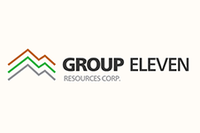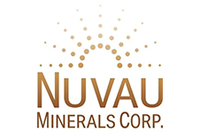MMG to Decide on Dugald River Development Plans by Q3 2015
MMG has come forward to say that it will decide during 2015’s third quarter how to develop its Dugald River project. The company is hoping the mine will be able to replace output from its Century mine, which is set to close this year.
Those who’ve been following the zinc space know that the general consensus is that prospects look good for the base metal. Put simply, major mines have closed or are set to do so, and there aren’t enough new mines ready to come online to replace their output.
One big mine that’s set to close in 2015 is MMG’s (HKEX:1208) Queensland-based Century mine. Though previously there was some confusion over its closure date, the company confirmed back in January that it will indeed stop producing this year. Furthermore, it will put out significantly less zinc as it winds down — 2015 output is set to come in at 320,000 to 370,000 tonnes compared to the 2014 total of 465,696 tonnes.
Tied to Century’s closure is the start up of MMG’s Dugald River project, also located in Queensland. The company has long hoped to fill the void left by Century with output from Dugald River, but has hit some roadblocks in that respect. As a Reuters article points out, development of Dugald River was put on hold in 2013 after MMG realized that the ore body was “more complicated than expected.” It then started new studies aimed at determining how to profitably develop the project.
It’s now two years later and MMG has come forward to say that it will decide during 2015′s third quarter how to develop Dugald River. “We are continuing to review all available options with our objective of maximising long-term shareholder value. We expect to make a decision regarding the revised project during the third quarter of this year,” said Andrew Michelmore, the company’s CEO.
The original plan was for Dugald River to produce 200,000 to 220,000 tonnes of zinc in concentrate per year for over 20 years, and while some market watchers might be concerned about the zinc price falling when that product enters the market, at least one analyst recently said that there’s no reason to worry. Jonathan Leng of Wood Mackenzie said at PDAC that some small zinc mines will open this year and next, as well as Gamsberg in 2017 and potentially Dugald River later on; together “they could deliver around 700,000 tonnes per year in zinc concentrate by the end of the decade.” However, he added, “we are going to need more than that.”
Even so, those involved in the zinc space will undoubtedly be watching closely for MMG’s fall announcement regarding Dugald River, particularly to see how much the new development plan differs from the one put forward in 2012.
Company news
Given zinc’s good prospects, investors are no doubt keen to keep an eye on companies moving zinc projects forward. Here are a couple that have put out news recently.
Last week saw Nevada Zinc (TSXV:NZN), formerly Goldspike Exploration, intersect “significant zinc mineralization” in an area at its Lone Mountain project that’s 200 meters from any drilling reported so far. The company believes it “correlate[s] directly with the location of a 1400 metre long zinc geochemical anomaly” located at the property.
The company said at the time that Phase III drilling would be starting this week, though there has been no announcement yet.
Zinc darling Trevali Mining (TSX:TV) has had a busy week, reporting Q1 production results from its Peru-based Santander zinc-lead–silver mine on Tuesday. The company notes in its release that output came to 12.5 million payable pounds of zinc, 7.4 million payable pounds of lead and 254,800 payable ounces of silver. Dr. Mark Cruise, Trevali’s president and CEO, said that the company is “very encouraged with … first quarter production at Santander, especially with continued improvements in mill performance.”
Trevali followed that news up Thursday with the announcement that exploration drilling at its New Brunswick-based Caribou zinc mine has intersected “signficant massive sulphide mineralization” about 200 meters outside the currently defined measured and indicated resource. Specifically, drill hole BR-1014A intersected 50.9 meters grading 5.08 percent zinc, 1.76 percent lead, 0.37 percent copper, 59.66 g/t silver and 1.63 g/t gold. Mackie Research Capital said in a note that the news appears to be “very positive” and “could lead to a significant resource expansion at Caribou.”
Securities Disclosure: I, Charlotte McLeod, hold no direct investment interest in any company mentioned in this article.
Related reading:
Zinc Outlook 2015: ‘Crunch Time’ is Coming
Jonathan Leng: Zinc Space Unbalanced by Timing, Not Lack of Projects

